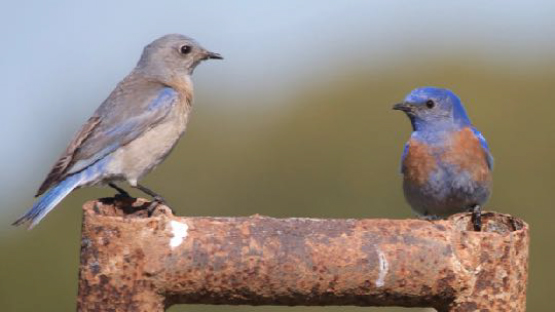
Photo by Charlie Hernandez Taken at Ariba Vista
BASIC DESCRIPTION by Cornell Lab of Ornithology
In open parklands of the American West, brilliant blue-and-rust Western Bluebirds sit on low perches and swoop lightly to the ground to catch insects. Deep blue, rusty, and white, males are considerably brighter than the gray-brown, blue-tinged females. This small thrush nests in holes in trees or nest boxes and often gathers in small flocks to feed on insects or berries, giving their quiet, chortling calls. You can help out Western Bluebirds by placing nest boxes in your yard or park.
I have now placed 5 nest boxes on the east side of the main residence at Ariba Vista. The Bluebirds are showing interested in the boxes and as the weather warms I’m sure some birds will use the boxes.
PLEASE DO NOT APPROACH THE BOXES OR ATTEMPT TO OPEN THE BOXES. Bluebirds are fragile and will abandon a nest that is disturbed.
Cool Facts by Cornell Lab of Ornithology:
A Western Bluebird weighs about an ounce. It needs about 15 calories (technically, kilocalories) per day, or 23 calories if raising young.
Western Bluebirds are among the birds that nest in cavities—holes in trees or nest boxes. But look at their bills—they’re not equipped to dig out their own holes. They rely on woodpeckers or other processes to make their nest sites for them. This is one reason why dead trees are a valuable commodity in manyhabitats.
Occasionally Western Bluebirds have helpers at the nest. Most of the extra birds attending nests are helping their presumed parents, some after their own nests have failed. Interestingly, studies show that many nests include young that were not fathered by the resident male.
The oldest known Western Bluebird was a male, and at least 8 years, 8 months old when he was found in California in 2008. He had been banded in the same state in 2001.


Leave a Reply